Bulk Materials Storage Cover
By Thomas W. Hedrick
The degree of sophistication of bulk materials storage product lines has increased considerably. Bulk storage is progressing from unfettered outside storage to covered structures; a more contained exposure to the environment. Fabric, steel, and concrete structures represent the environmental envelope over bulk materials.
1. Fabric Bulk Storage Structures
Lorem ipsum dolor sit amet, consectetur adipiscing elit, sed do eiusmod tempor incididunt ut labore et dolore magna aliqua. Ut enim ad minim veniam, quis nostrud exercitation ullamco laboris nisi ut aliquip ex ea commodo consequat. Duis aute irure dolor in reprehenderit in voluptate velit esse cillum dolore eu fugiat nulla pariatur. Excepteur sint occaecat cupidatat non proident, sunt in culpa qui officia deserunt mollit anim id est laborum.
Figure 1. Fabric Covered Grain Storage
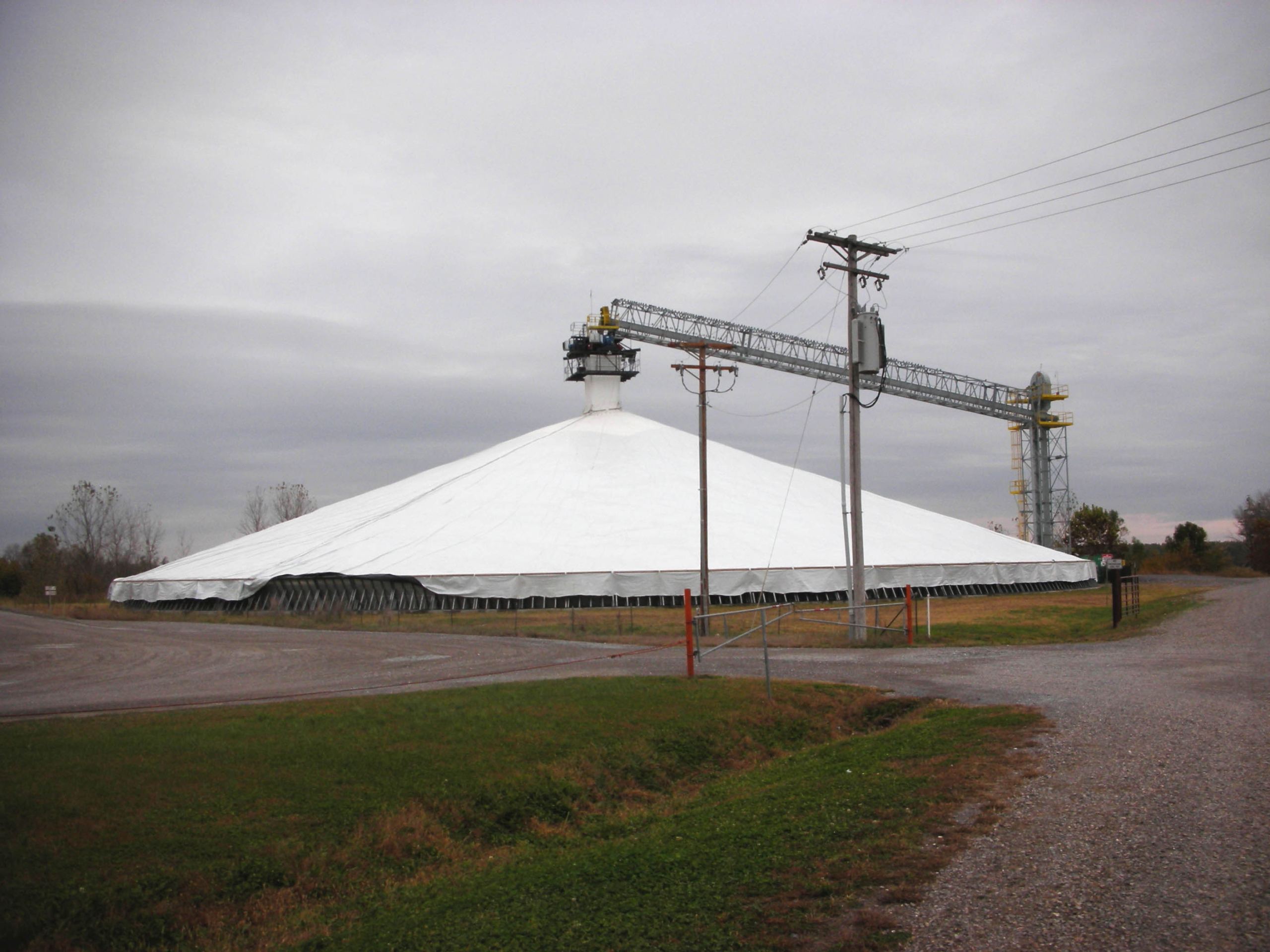
The center stacking column has a fan system that continuously sucks air through the bulk storage. The air is drawn through the peripheral retaining sections to the center column and exhausted. The negative pressure holds the fabric against the stored material, keeping the fabric from “flapping”.There is an elaborate anemometer system on the column that increases the negative pressure according to wind speed. Note that when the wind exceeds 40 mph (64 kph), a crew is required to monitor the stability of the fabric.
Figure 2. Edge Retaining Structure
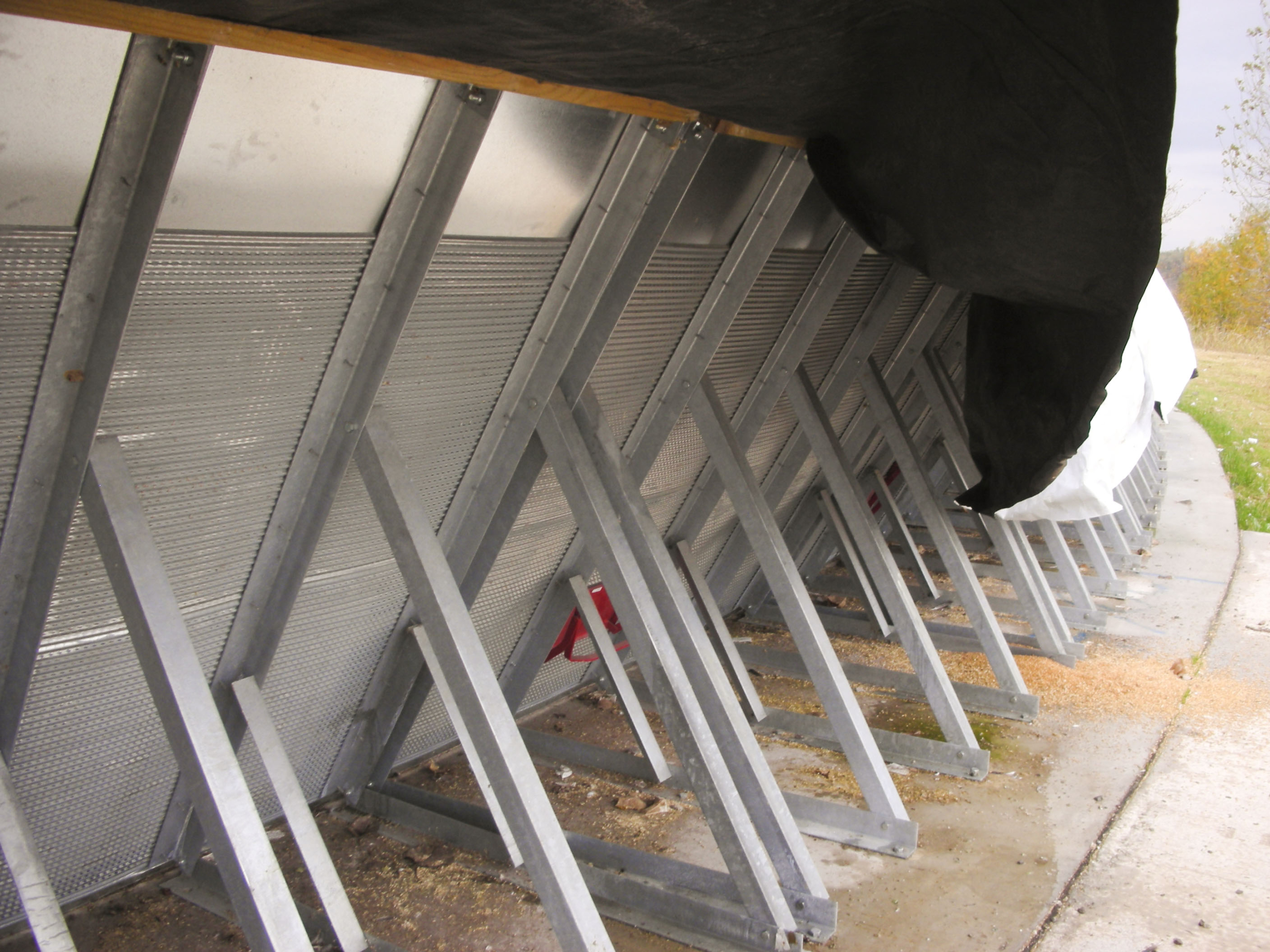
Another type of fabric structure consists of an arched structural frame over a conventional tripper conveyor (with a tunnel reclaim belt conveyor). Figure 3 shows a urea storage fabric structure draped over the steel frames. Since the building is held under negative pressure, the entry is an airlock structure.
This particular building was on a high water table. The center tunnel concrete structure enclosed the withdrawal belt tunnel and provided the structural support for the tripper conveyor support bents. The fabric support structure has an independent foundation. The owner used an asphalt floor between the tunnel and the building perimeter.
Figure 3.Urea Tripper Building with Fabric Cover
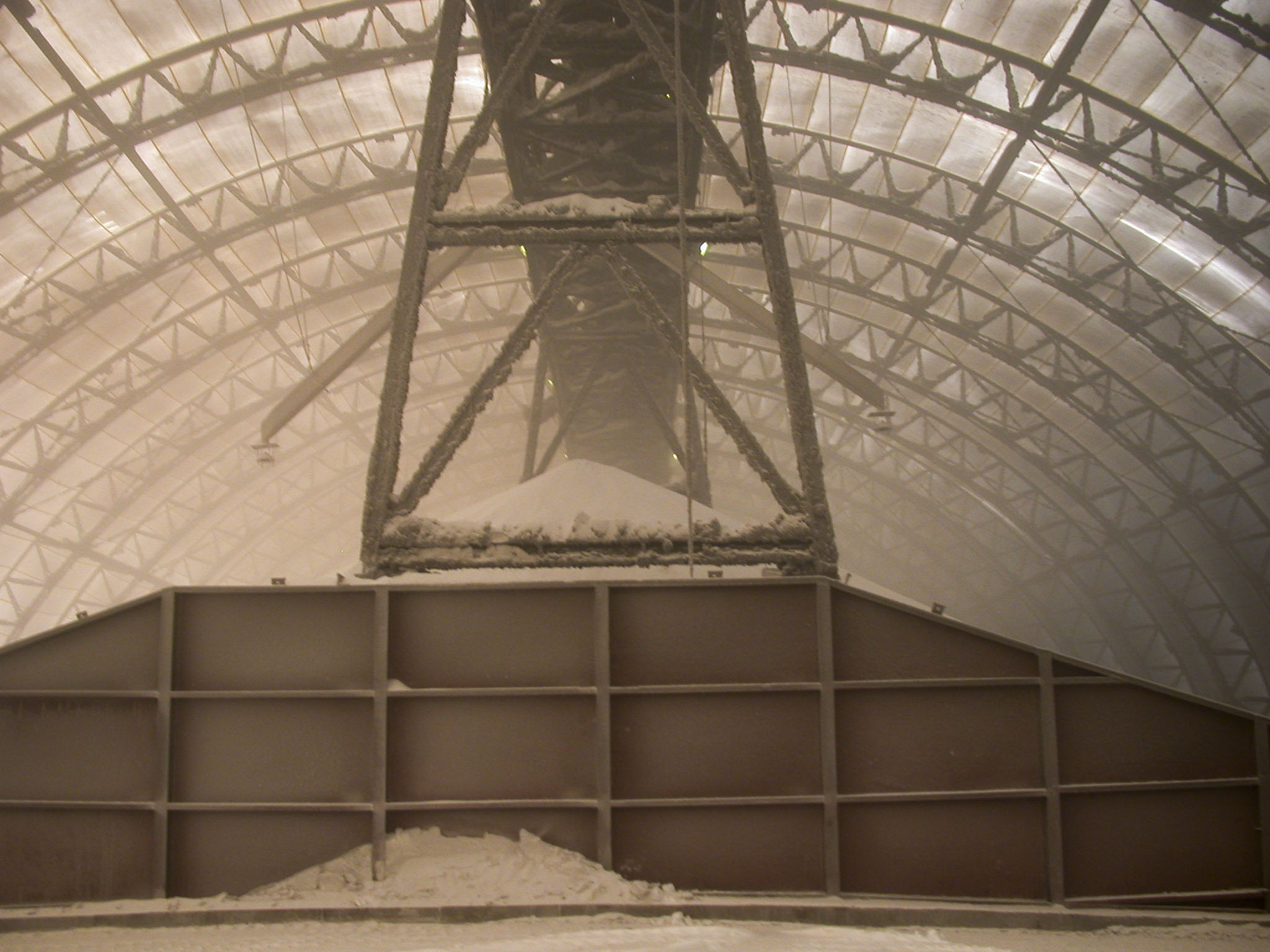
Figure 4 shows a classic air supported structure. This structure was over a swimming pool; however, these types of structures are feasible for bulk materials storages.
Only the inflation fans provide rigidity to this structure. For industrial applications, large air-lock entries and backup power supply for the blowers are mandatory.
Figure 4. Air Supporter Structure
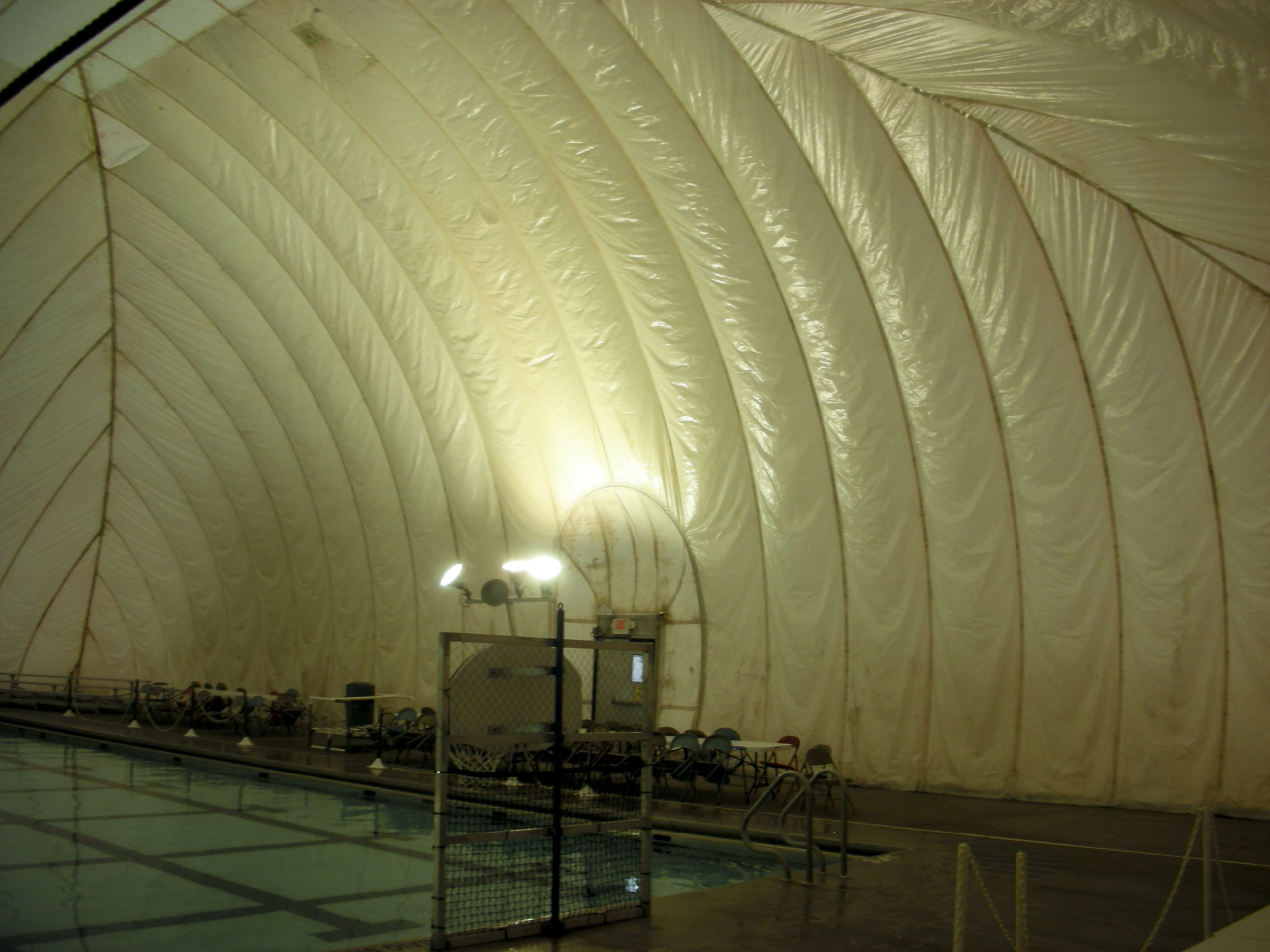
2. Metal Rectangular Bunkers
Figure 5 shows one of the most common and traditional bulk storage arrangements. There is an outside tripper conveyor in the foreground. A metal structure with a tripper conveyor in the gallery is in the background. The product is elemental sulfur, which in most locations would not be a candidate for outside storage. This particular facility is in the Port of Dakar, Senegal, Africa.
Figure 5. Foreground: Outside Tripper Conveyor. Background: Metal Structure for Inside Storage

Figure 6 shows how a typical bunker building looks inside. A tripper conveyor distributes the bulk material. Under floor tunnel or tunnels are used to reclaim material.
Note that under-grade reclaim tunnels typically claim less than 1/3 of the storage volume. The majority of the stored material must be repositioned by dozer over the static reclaim positions. This work is done in an inhospitable environment for both the equipment and the operator.
The venting volume to keep the dust from escaping outside the building is uneconomical with the door open.
Figure 6. Inside a Metal Bunker Building
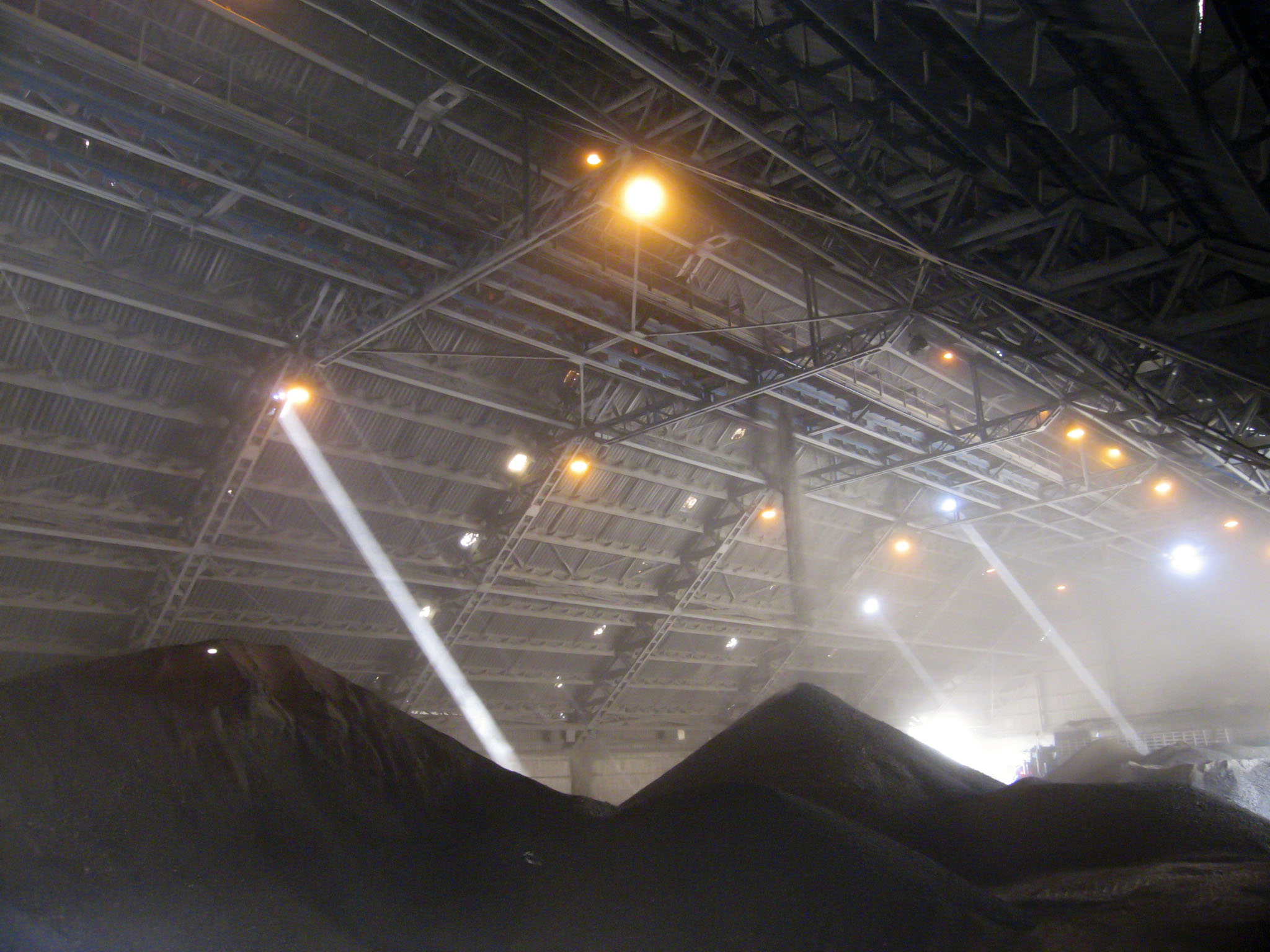
To increase the amount of reclaimable material, often the metal building is constructed with concrete retaining wall sides. Figure 7 shows a 3-meter high wall reinforced with a counterfort. This is an effective way to increase the depth of material. Typically, retaining walls taller than 3 meters are not economical.
Figure 7. Retaining Wall with Counterfort
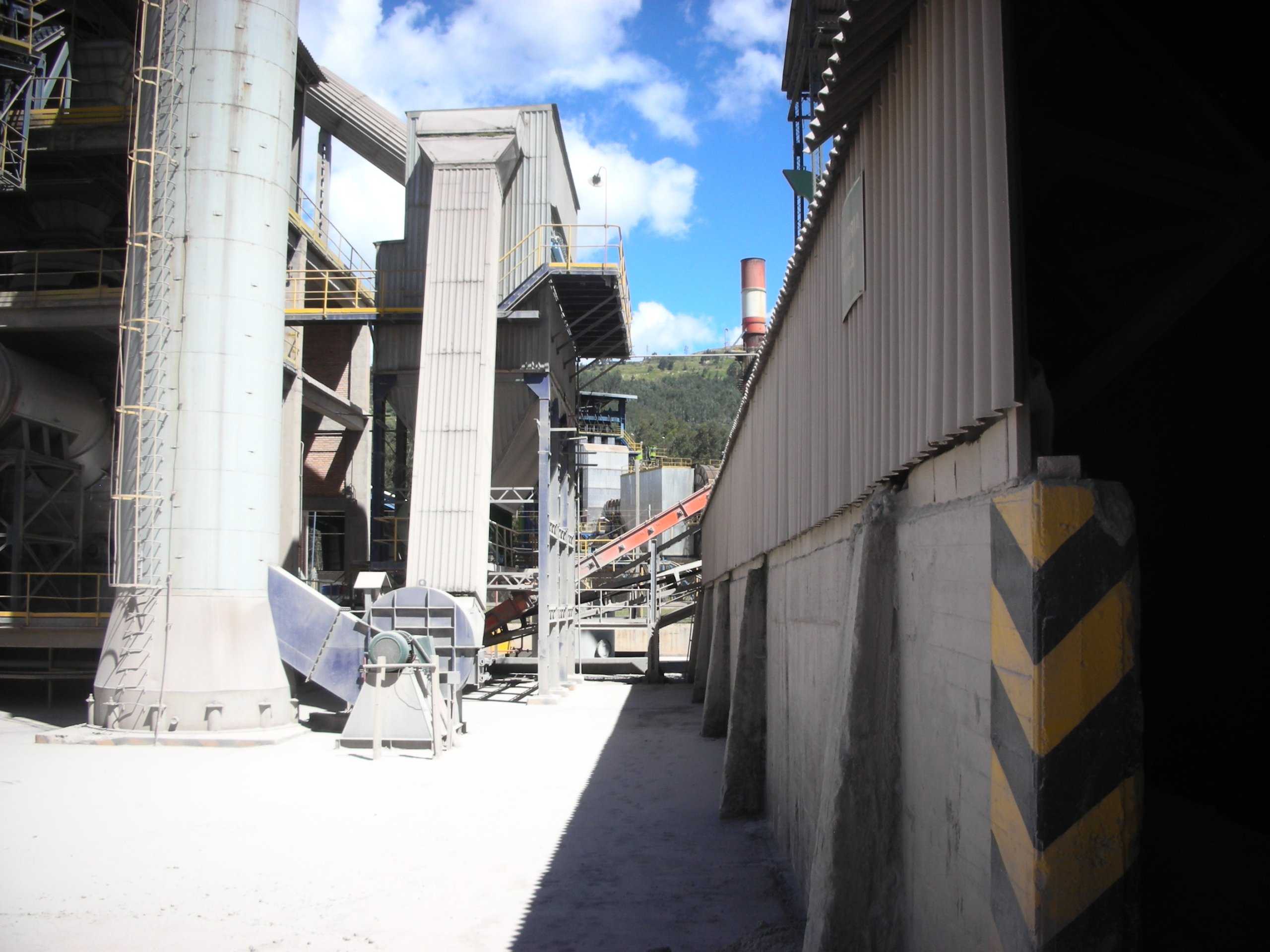
3. Steel Space Truss Domes
Figure 8 shows a typical reclaimer in a Space truss style dome. Circular stacker / reclaimers are very popular mechanical devices since they can be used for blending the material fed into the storage. The reclaimed volume is generally 100%. A “rake” reclaimer further develops the overall product mix. A popular cover is the steel space truss.
Figure 8. Space Truss Dome Over a Circular Stacker/Reclaimer
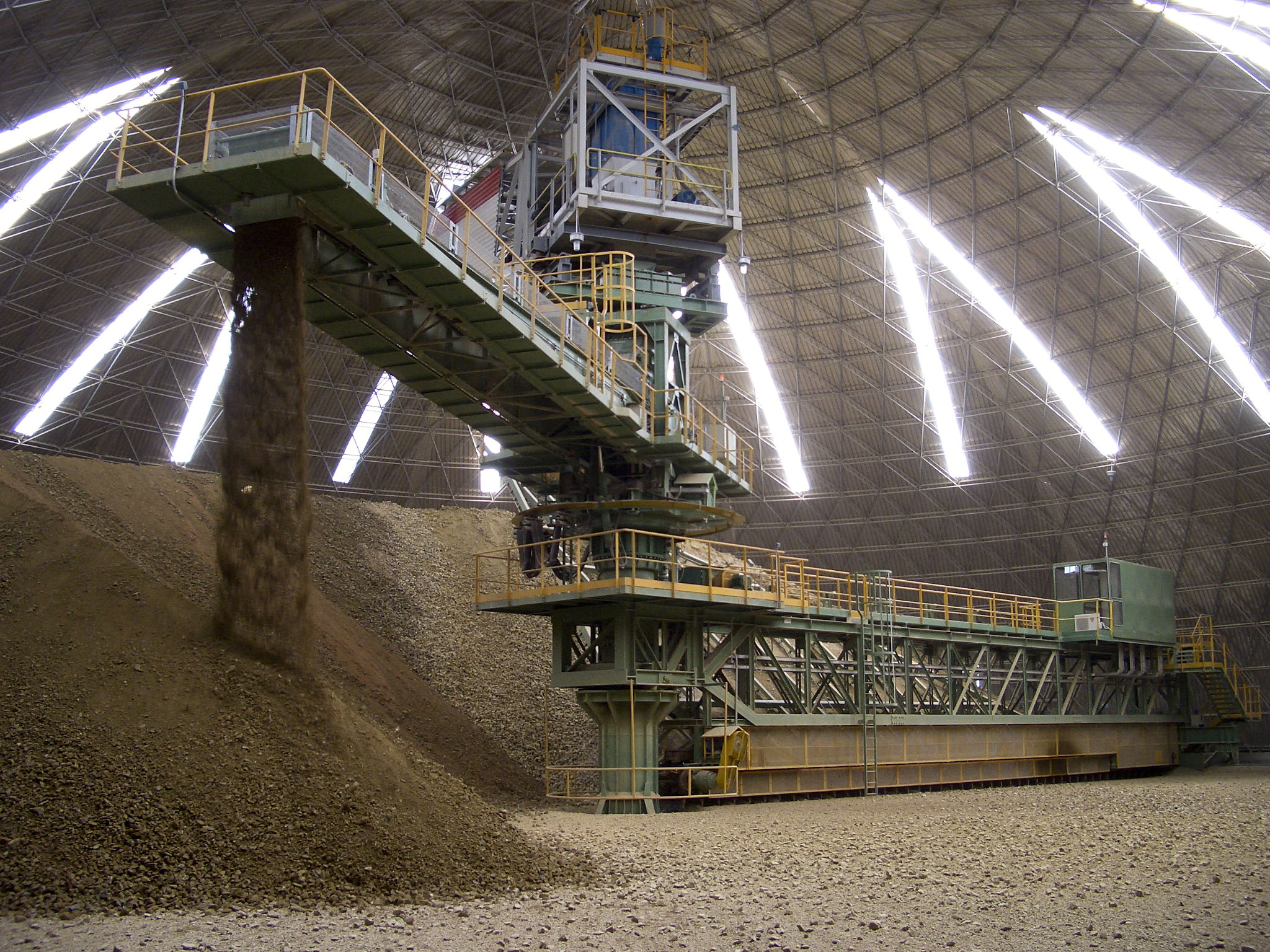
Figure 9 actually shows the truss under construction, with the aforementioned “rake” over the reclaim bridge.
Figure 9. Space Truss Dome Shell Over a Blending Stacker/Reclaimer
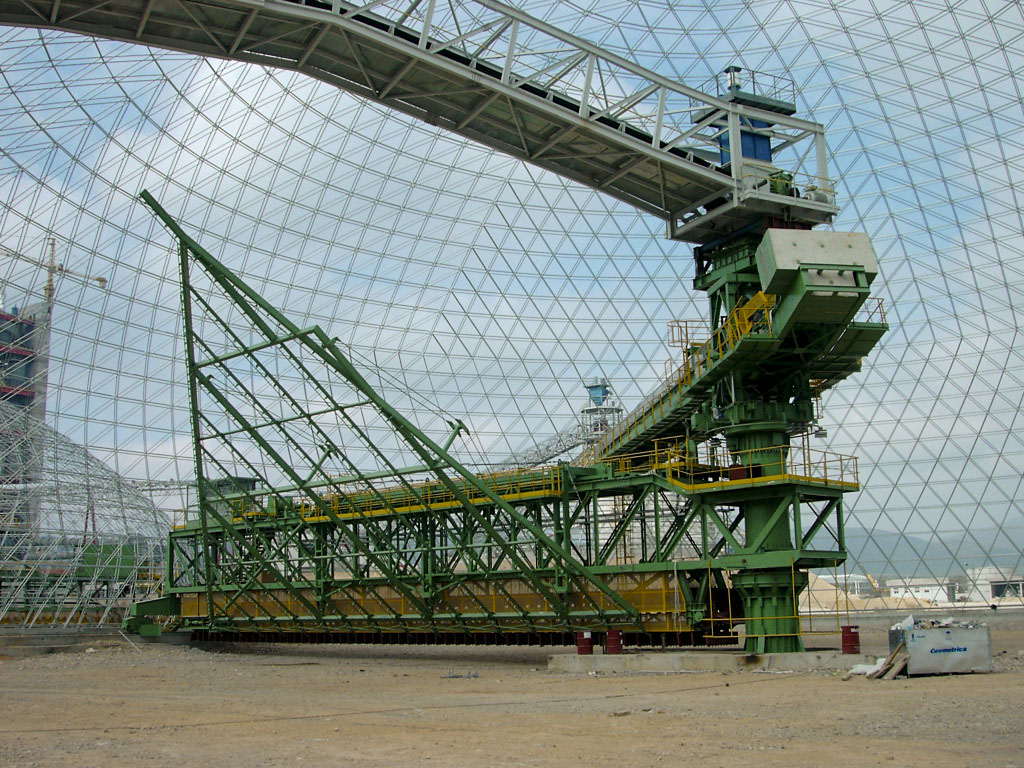
Figure 10 shows an example of a portal stacker/reclaimer , which is a common type of linear blending system.
The typical cover for the linear storage is a frame type steel structure with metal cladding. It can be either a space frame or, in shorter spans, a conventional A-Frame.
Figure 10. Linear Storage Blending System

4. Concrete Shell Storage Structures
Concrete shells offer one more degree of containment. Typically, they are very economical retaining structures. When used with a circular storage/reclaimer, such as in Figure 11, the shell can support the bulk load to considerable heights.
The coal inside this 300-foot (91 m) diameter dome was stacked 55 feet (17 m) high against the shell.
Figure 11. Circular Stacker Reclaimer Inside a Concrete Dome
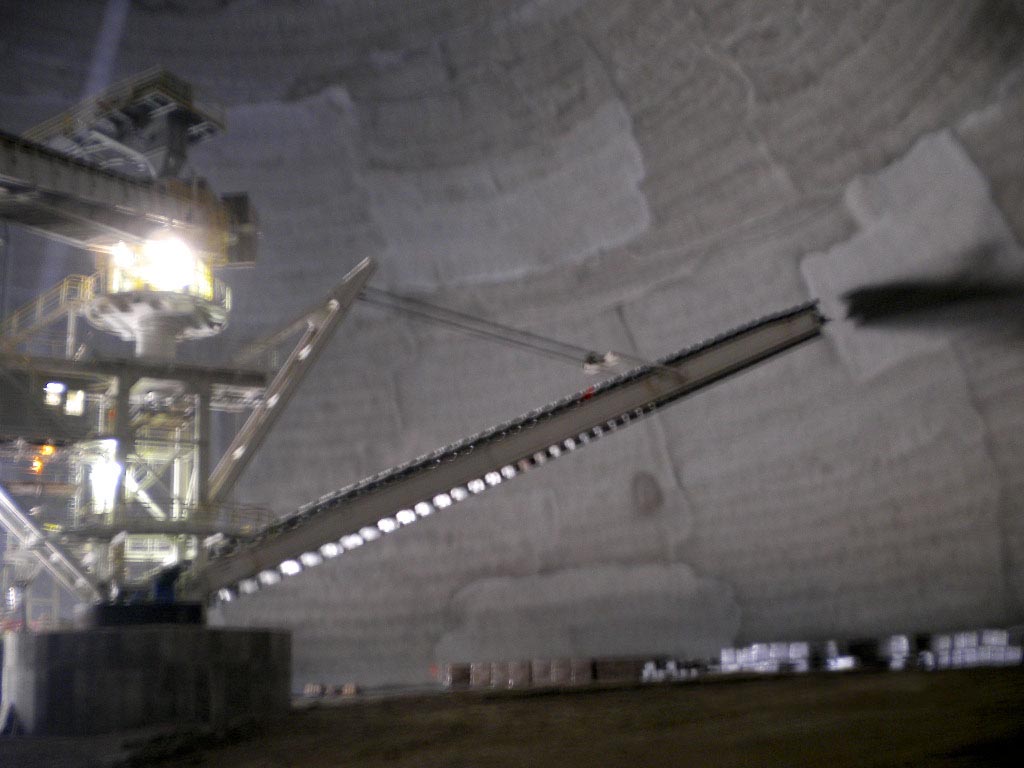
Figure 12 is an exterior photo of the same coal storage dome in Figure 11. The environmentally conscious Owner chose a white exterior for Powder River Basin Coal.
Earlier, it was noted that an open pile has less than 33% live storage (a pile with a central tunnel). Using the attractive structural cost of concrete dome construction, a couple of tunnels and a tall dome can increase the live storage well over 85%.
Figure 12. White Exterior, Coal Storage Dome
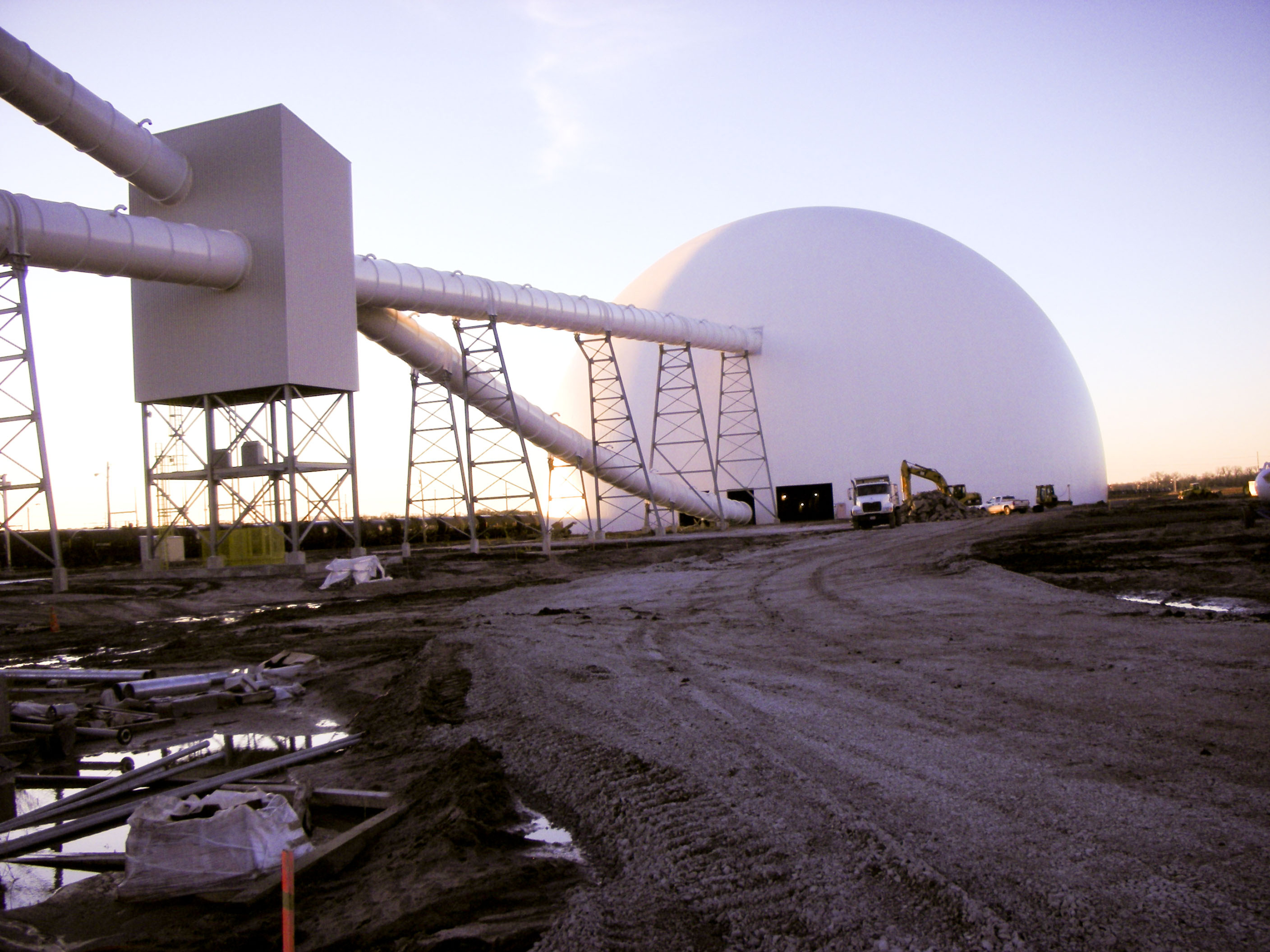
In Figure 13, the concrete shell is designed to hold 200,000 t of cement clinker. The high percentage of gravity reclaim is possible because of the cylinder section under the hemispherical shell. During the feasibility studies, the project cost was optimized. The dome shell is more expensive, but there is no mechanical reclaim, just reliable gravity.
Figure 13.Cement Clinker Stored Inside this Shell, with 4 tunnels, is Over 85% Gravity Reclaim
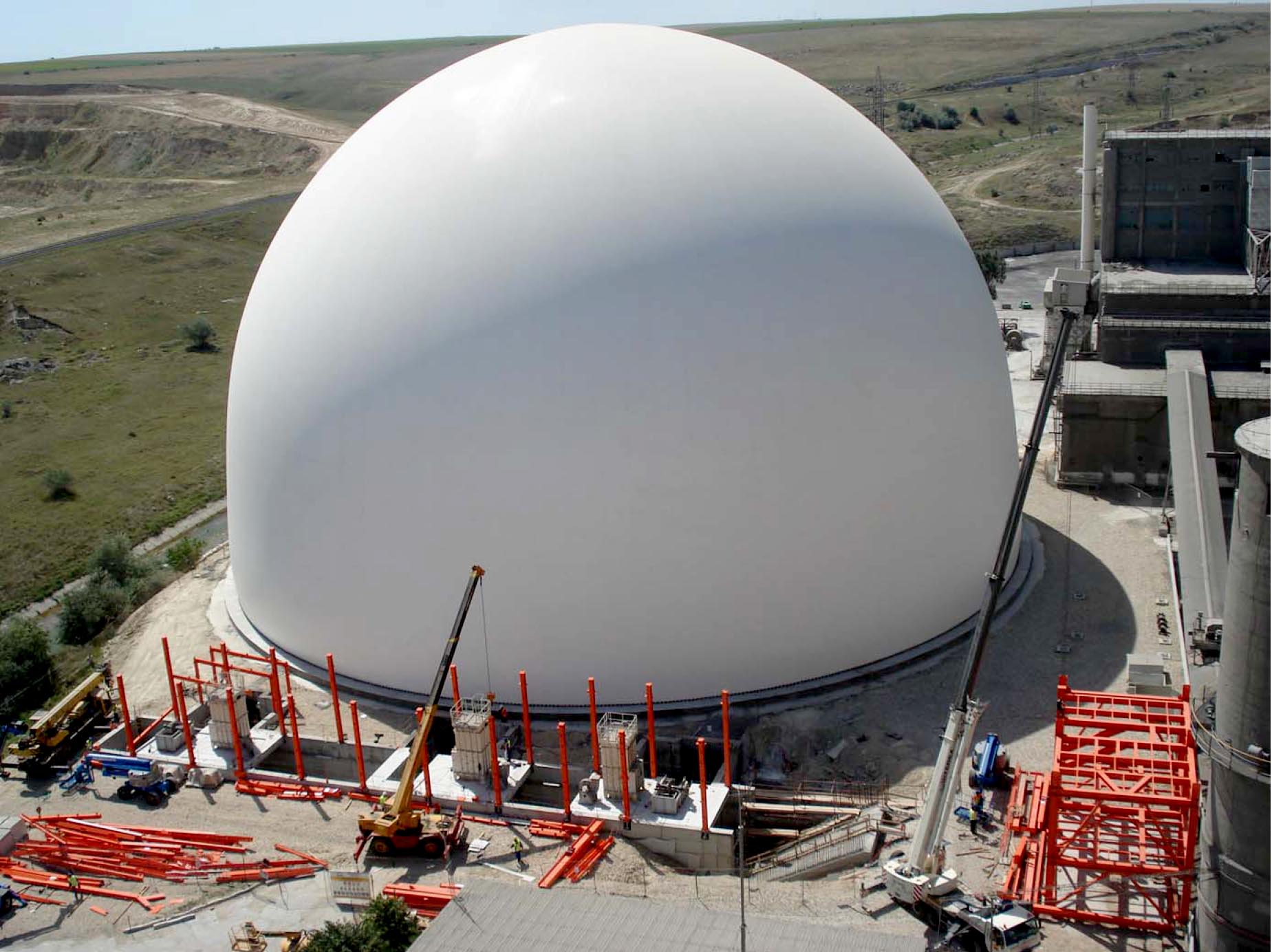
PEC Consulting has significant expertise in bulk materials handling and storage. We can analyze your bulk storage requirements and advise you on the pros and cons of the various choices. We team each system with the most advantageous loading and reclaim system and evaluate the results. We offer the up-front studies that allow you to choose the best technical, environmental and economical solution for your application.
About the Author(s)
Thomas W. Hedrick
Mr. Hedrick, P.E. is a Senior Project Consultant at PEC Consulting Group. He specializes in materials handling, has been in manufacturing and engineering for 40 years, holds seven U.S. patents, and has written several dozen technical papers for various magazines and conferences around the world. Mr. Hedrick maintains a passion for excellence in client relations and project execution.
PEC Consulting Group LLC | PENTA Engineering Corporation | St. Louis, Missouri, USA
How can we help you? Get in touch with our team of experts.
